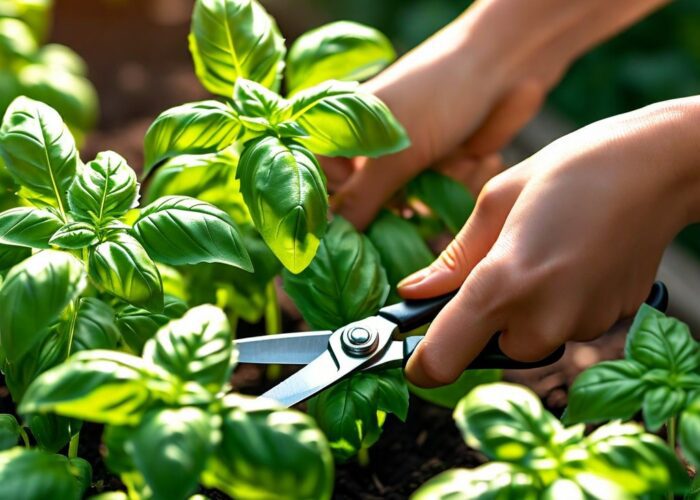How to Water Basil Correctly (Without Killing It)
Basil is a favorite among home cooks and gardeners for its fragrance and flavor. But if you want it to flourish, getting the watering routine right is essential. While Ocimum basilicum is generally easy to grow, improper watering can quickly lead to drooping, root rot, or a lifeless plant that never makes it to your pesto.
Why Basil Needs Consistent Watering
Basil grows best in warm, sunny locations with nutrient-rich, well-drained soil. Whether you’re growing it in a backyard bed, on a windowsill, or in a patio pot, proper watering plays a key role in keeping the plant healthy and productive.
Keep the soil consistently moist — not bone dry, and never soggy. Your plant’s environment will dictate how often you need to water.
Proper Watering Techniques for Basil
Water at the Base
Always water the soil, not the leaves. Wet foliage — especially overnight — invites fungal issues. Use a watering can or hose with a gentle stream and water until it drains from the bottom. Drainage is a must whether basil is in a pot or the ground.
Avoid Standing Water
If your basil’s in a pot, don’t let water pool in the saucer below. Stagnant water can lead to root rot. Make sure excess water drains freely.
Know the Signs of Trouble
- Overwatering: Yellow leaves, mushy stems.
- Underwatering: Wilted, crispy leaves and dry stems.
Mist in Dry Conditions
Basil benefits from humidity. If you’re growing it indoors or live in a dry climate, an occasional misting can help — but it’s not a substitute for watering the soil.
Morning Is the Best Time to Water
Water your basil in the early morning. This gives the roots moisture to handle the day’s heat and allows any dampness on leaves to dry quickly, reducing the risk of disease.. Avoid evening watering — especially in cooler months — as it can leave leaves wet overnight, encouraging fungal growth.
Tailoring Watering to Growing Conditions
- Outdoor pots: Dry out quickly in summer. Check soil daily.
- Indoor plants: Typically need watering 1–2 times per week, based on light and temperature.
- Garden beds: Water deeply once or twice a week, depending on weather and rainfall.
- Seedlings: Keep soil lightly moist. Avoid heavy watering that can wash them away or promote mold.
- Apply mulch (like straw or shredded bark) around outdoor basil to retain moisture and keep the soil cool.
What to Do When It Rains
If rain is in the forecast, skip watering. But always check your plants afterward — too much rain can lead to the same problems as overwatering. If you’re growing basil in containers, move them under shelter during storms.
Basil is resilient, but a little consistency goes a long way. Water at the soil level, avoid letting the soil get too dry or too wet, and stick to morning watering. With just a bit of care, your basil will stay lush, fragrant, and ready for harvest all season.













